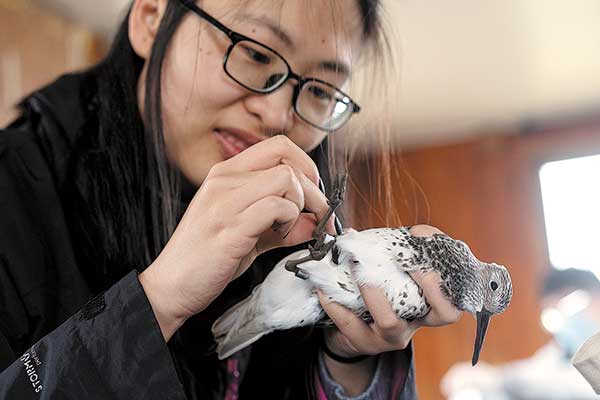

Agreements
The conservation of migratory birds is never the task of an isolated reserve, but requires joint efforts by different parties around the region, the country and the world. Given the long distances, international cooperation along the flyway is essential to conserving and protecting migratory birds and their habitats.
"The protection of a single site is never enough for conservation. The success of certain bird conservation projects is usually the result of joint efforts made by many countries," Ma says.
China has become more involved in international cooperation around migratory bird conservation since the 1980s. The National Bird Banding Center of China, part of the Chinese Academy of Forestry, was established in 1982. It functions as a national authority that compiles bird data collected across the country, to be shared internationally for conservation and research purposes.
The country has signed bilateral conservation agreements with others under the East Asian-Australasian Flyway, including Japan, Australia, South Korea and Russia, and there is more frequent international communication and exchange among academies and scientific research institutions, with visiting students and researchers taking part in bird banding, fieldwork and monitoring.
The Yangtze River Delta region has also been increasing conservation efforts in recent years, Ma says. Last winter, Shanghai, and Jiangsu, Anhui and Zhejiang provinces joined forces to carry out a survey of wintering waterbirds, according to Ma.
"The Yangtze River Delta region is geographically connected and has plentiful wetland resources, so we are able to contribute jointly to waterbird conservation. Although different species may use different places in the region, we still see much commonality. With the country's increasing emphasis on the environment and protecting biodiversity and support from regional governments, we are expecting more coordinated conservation efforts for birds, habitats and wetlands," Ma says.